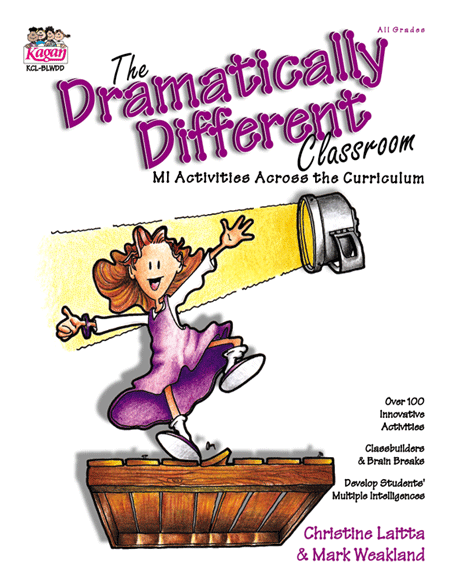
The Dramatically Different Classroom
MI Activities Across the Curriculum
| BLWDD • $29 | |
| Buy PDF eBook | |
Awaken the Einsteins, Hepburns, and Shakespeares within your class! Multiple intelligences theory teaches us that students have different interests, different abilities, and learn differently. Spanning the intelligences, these 100 plus activities are designed to release the hidden genius in students with all intelligences, especially those who learn through movement and music. You'll love these innovative ways to present your everyday curriculum including: Character Monologues, Wax Museum, Math Theater, and Soaring through the Solar System. Your mathematics, language arts, science and health, and social studies come alive through creative dramatics. Learning is more engaging for all students, and definitely more memorable. Includes terrific classbuilders and energizing brain breaks. Make a dramatic difference in your classroom! 216 pages.
Sample Pages
Click on an image to view and/or print it full size.
By John Hayes, Post-Gazette Staff Writer
The big exam was scheduled for the next morning and Christine Laitta didn't know her polygons from her paraboloids. Several of her Penn State friends brought over the one thing that would keep Laitta from flunking: a pizza.
"I had trouble visualizing spatial images from a two-dimensional page in a book," says Laitta, now a part-time drama teacher at Rogers School for the Creative and Performing Arts in East Liberty. "They took the pieces of pizza and sort of floated them around the room so I could see them three-dimensionally. After that, I could start to see things."
Many people such as Laitta just don't get it when they just read it. They learn better and retain information longer when they can see it, touch it, sing it, say it or act it out. Laitta and Mark Weakland, a special education teacher and teaching consultant with an intermediate unit in Armstrong and Indiana counties, have collaborated on a book that helps teachers to use nontraditional methods to help kids learn.
The idea isn't revolutionary, but many of the book's interactive classroom activities were drawn from the authors' backgrounds in the arts.
Throughout the late '80s and '90s, Weakland was the drummer for Pittsburgh's Grateful Dead-influenced Sandoz. He continues to play percussion with various jazz and pop groups and has recorded two CDs of original music and one children's album.
Laitta is an actor who has performed with Pittsburgh Musical Theater, Mountain Playhouse and City Theatre outreach programs.
The book's use of music, dance and theater skills as learning aids reflects some of the work of Harvard education professor Howard Gardner. His theory of "multiple intelligences" holds that conventional teaching methods employ only verbal/linguistic and logical/mathematical skills, while humans perceive the world in seven or eight parallel but separate ways.
|
Want to learn the multiplication tables? Some people can read the charts once and remember them for the rest of their lives. Others may recall them more thoroughly if they sing the numbers in a chant, paint them in a picture or act out the numbers' relationships.
In "The Dramatically Different Classroom," recently issued by Kagan, a large publisher of educational aids, Weakland and Laitta offer dozens of interactive activities that they hope teachers of all grades will use to help communicate what's in their textbooks.
"It's not about replacing the books that the school boards have given them," says Weakland, who instructs teachers on the use of unconventional teaching methodologies through his intermediate unit. "The curriculum comes first ... and teachers are under a lot of pressure to cover a lot of ground. With our book, they could let some of the kids [pose in] a tableau that depicts a historical event, instead of giving them a paper and pencil task. Or instead of repeatedly going over this algebraic equation, maybe [they] could do something a little bit different. The book enables you to extend and enrich that basic lesson that you're tied to."
"I was one of those students who didn't learn the way everybody else learns," says Laitta. "I wanted to find new and creative ways to show teachers that all kids have the potential to learn, but everybody learns in different ways. Look, here I am, one of those kids labeled a 'slow learner,' and I'm the author of a book."
The paperback teaching aid includes nearly 200 pages of adaptable classroom activities, presented in a way that's casual, fun and informative. Teachers are encouraged to find activities that dovetail with their lesson plans and incorporate them in their classrooms. Each scenario includes a list of needed materials, step-by-step instructions, tips for teachers, "enhancers" to make the activities more valuable, and a list of the multiple intelligences that may be triggered by the activity.
In a social studies activity titled "The State I'm In," each student researches a U.S. state and addresses the class as if he were that state. Southern states, for instance, might speak with an appropriate accent and dress the part. Students are encouraged to talk about their state's geography, natural resources, industries and points of interest. "Tourist groups" might ask questions, or students could team up into geographic regions. Teachers are encouraged to provide U.S. maps and information about the states. The educational value could be enhanced, for instance, by inviting other classes to be the tourists or by broadening the concept to countries of the world. The book notes that students participating in "The State I'm In" learn the lesson in several ways using five separate cognitive skills: verbal/linguistic, visual/spatial, bodily/kinesthetic, interpersonal and logical/mathematical.
The concept of teaching with participatory activities that appeal to multiple intelligences has been gaining credibility for some 20 years.
"Without a doubt, there's some relationship between our perception of music and drama and dance and the basic materials that we're asked to learn, when they're presented in this way," says Lois Hetland, a Cambridge researcher who worked with Gardner. "What that relationship is exactly, we don't know. It seems that networks of neurons are being trained and strengthened simultaneously. When the pathways of one network are fired in sequence, it's coordinated with the other networks. We're perceiving things in different ways and when we access one particular memory, we access the others as well."
Theoretically, retention levels will be higher when the lesson involves multiple levels of perception. A classroom activity based on Columbus discovering the Americas could impress upon the brain several related memories. When the student thinks of Columbus, she may remember the catchy song she sang with the class; the dramatic tableau showing the Nina, Pinta and Santa Maria leaving Spain; the texture of the Caribbean islanders' costumes; the rhyming poem about 1492; and her textbooks' words and pictures putting it all in perspective.
Some schools routinely encourage the type of activities recommended in "The Dramatically Different Classroom."
Sue Slezak, a third-grade teacher at Blairsville Elementary School, says she uses similar class activities "all the time."
"I really put on a lot of music in my classes," she says. "I have a song I always use that teaches the four types of sentences, and I know that our fourth-grade teachers use a state capital rap and songs about the multiplication tables. They're really corny songs and the kids laugh and laugh, but I'll give a test and I hear them humming those patterns."
Rhonda Taliaferro, Laitta's principal at Rogers CAPA, sees the book as sort of an extension of the enthusiastic, cooperative classroom techniques she's observed in Laitta's classes.
"I think when we talk about multiple intelligences, [we're talking about] allowing children to develop and learn instead of saying, 'Read the book and take the test,' " she says. "It's teaching critical thinking and cooperation and contributing. Her activities do a lot to inspire that. Without hesitation, I'll be encouraging teachers to use the book this year at Rogers CAPA."
Laitta quips that the original title of the book was "New Ways to Teach the Same Old Stuff."
"That's our mission," she says. "To shake it up. To get teachers to look at things in different ways."
"I always tell teachers, their main purpose is not to be fun," says Weakland. "They're not there to entertain. Learning takes a certain amount of discipline that has to come from the student. But at the same time, it is the job of the teacher to motivate students, and I've seen these methodologies work in the classroom."
Back

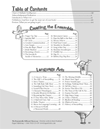
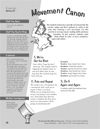
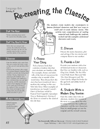
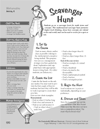
 Mark Weakland and Christine Laitta think that students learn better and retain information longer when they can see it, touch it, sing it, say it or act it out. (Bill Wade, Post-Gazette)
Mark Weakland and Christine Laitta think that students learn better and retain information longer when they can see it, touch it, sing it, say it or act it out. (Bill Wade, Post-Gazette)